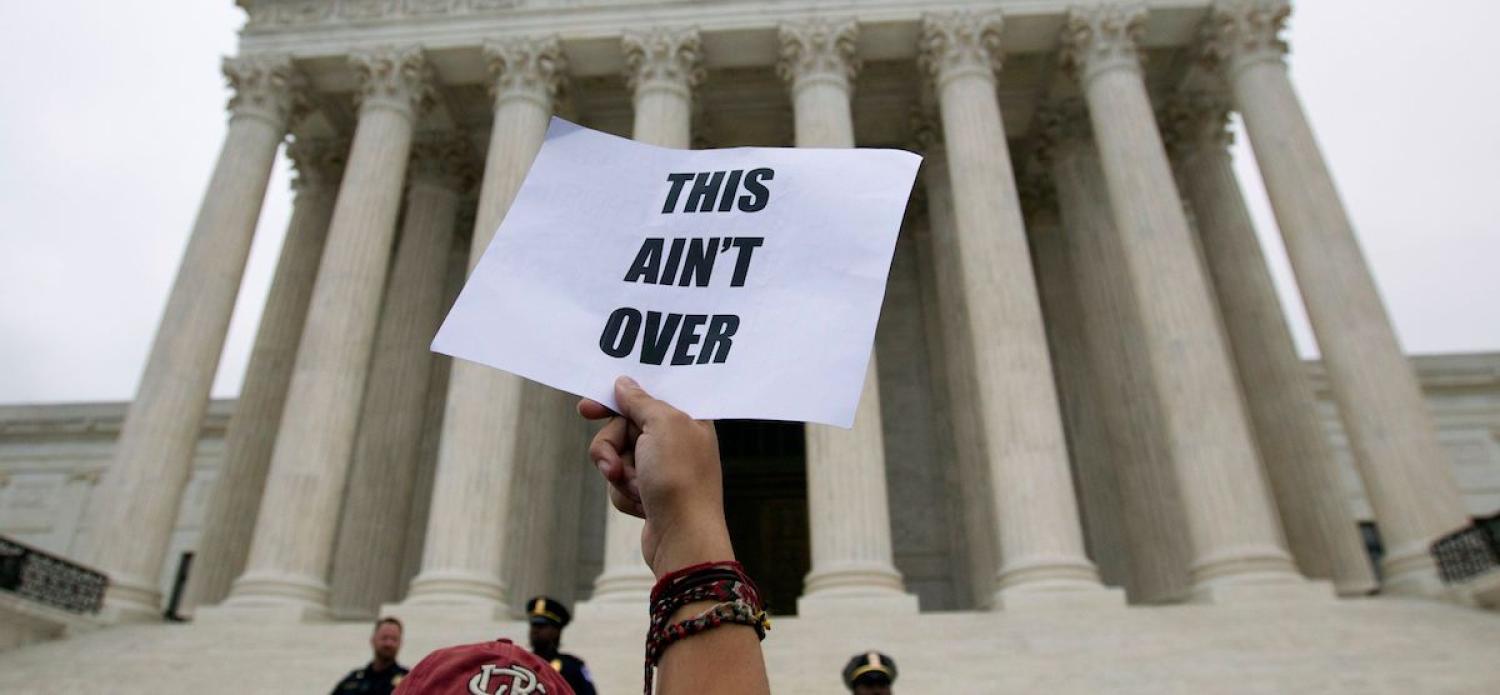The past month or so has seen immense social change in India. Gay sex was decriminalised, two lesbians were given the right to live together against the wishes of their families, and adultery was decriminalised.
These important progressive changes were not made by the government of Narendra Modi, which voiced its opposition to one of the decisions, and was silent on the others.
They were made in the Indian Supreme Court, which struck down colonial-era laws as unconstitutionally discriminatory towards lesbian, gay, and female Indians.

The Court, a 68-year-old institution that has been responsible for a lot of modernisation of Indian society, is occasionally accused of corruption, but rarely accused of partisanship.
Judges are appointed by an internal judicial system and by law must retire at the age of 65. The number of justices on the bench changes, but is limited at 31, meaning no single judge wields too much power for too long. This system has proved effective at maintaining a by-and-large unbiased judicial branch of government in the world’s largest democracy.
By contrast, in the world’s second-largest democracy, the United States, the Supreme Court has entered an era of unprecedented crisis.
Over several decades, the court has gradually become more polarised. The path to partisanship has become pronounced.
Beginning in the early 1980s, Republican and Democratic party presidential campaigns promised to apply “litmus tests” to judicial appointments. As Americans debated abortion, Republicans promised not to appoint pro-choice judges, and Democrats did the opposite. While abortion has been the main dividing issue, others have arisen, with Republicans demanding conservatives be appointed, and Democrats demanding liberals.
Over several decades, the court has gradually become more polarised. The path to partisanship has become pronounced.
This was the point where the Supreme Court began to lose its nonpartisan reputation.
But the US Supreme Court, as opposed to its Indian equivalent, was extremely susceptible to partisan interference.
Beyond the fact that US judges are directly appointed by the President and Senate, there are only nine of them and the appointment is for life, meaning any individual appointment will have long-lasting effects on policy and justice in America.
The balance of the Supreme Court at any particular time is responsible for the US having legal abortion, same-sex marriage and essentially unrestricted spending on election campaigns.
It could be argued that the makeup of the Supreme Court in December 2000 is what led to the election of George W. Bush, when five Justices nominated by Presidents Ronald Reagan and George H.W. Bush prevented the recount of votes in Florida that was requested by Democratic presidential candidate Al Gore.
And yet through all of those decisions, the court avoided the appearance of blatant partisanship, as nominees to fill the bench refused to engage in partisan bickering.
Until this month, and the confirmation of Brett Kavanaugh.

Kavanaugh began his career working on the Independent Counsel investigation into President Bill Clinton.
He then worked in the George W. Bush White House before he was nominated to the Federal Court in 2006.
Twelve years later, he was nominated by President Donald Trump to replace Justice Anthony Kennedy, who for years had been known as the swing vote on the Court, surrounded by four conservatives and four liberals.
The fight over Kavanaugh was always going to be dirty.
Democrats hadn’t forgotten Senate Republicans’ year-long campaign to hold open a Supreme Court seat to prevent President Barack Obama making a final appointment before the 2016 election.
Democrats call that the “stolen seat”, and their liberal base demanded they do everything possible to make the process difficult for Trump and Senate leader Mitch McConnell.
This meant when allegations of sexual assault emerged after the regular confirmation hearings had concluded, the Republican party felt confident in declaring that the Democratic party had cooked up a plot to bring down Kavanaugh.
After all, Democratic Senate Leader Chuck Schumer had said he would fight the nomination “with everything I’ve got”.
In the age of Trump, touting a conspiracy theory that Democratic senators were trying to pin false sexual assault charges on their nominee is par for the course.
But Kavanaugh’s decision to join the chorus was the one which pushed the Supreme Court past a point of no return. He shouted during his opening address:
This whole two-week effort has been a calculated and orchestrated political hit, fuelled with apparent pent-up anger about President Trump and the 2016 election. Fear that has been unfairly stoked about my judicial record, revenge on behalf of the Clintons, and millions of dollars in money from outside, left-wing opposition groups
The words could have been written by Trump himself.
Kavanaugh continued:
This is a circus. The consequences will extend long past my nomination. The consequences will be with us for decades
This point is hard to dispute.
With his attack on Democratic senators and “left-wing opposition groups”, Kavanaugh left no doubt about his political allegiances.
While nominees in the past may have had historical connections to a particular political persuasion, none have declared under oath in a Senate Hearing their hostility towards one party.
In the past, the US Supreme Court has come under criticism for its decision-making, but since the mid 1970s, it has been seen as the most trustworthy of the three branches of the US Government.
The 229-year-old institution has several structural problems – lifetime tenure chief among them.
But now, with a clearly partisan judge sitting on the court, every decision it makes will be questioned, not just for whether it is just, but also for whether it is motivated by party affiliation.
It may not be long before the Indian Supreme Court overtakes its US counterpart as a fairer, more trusted institution.


